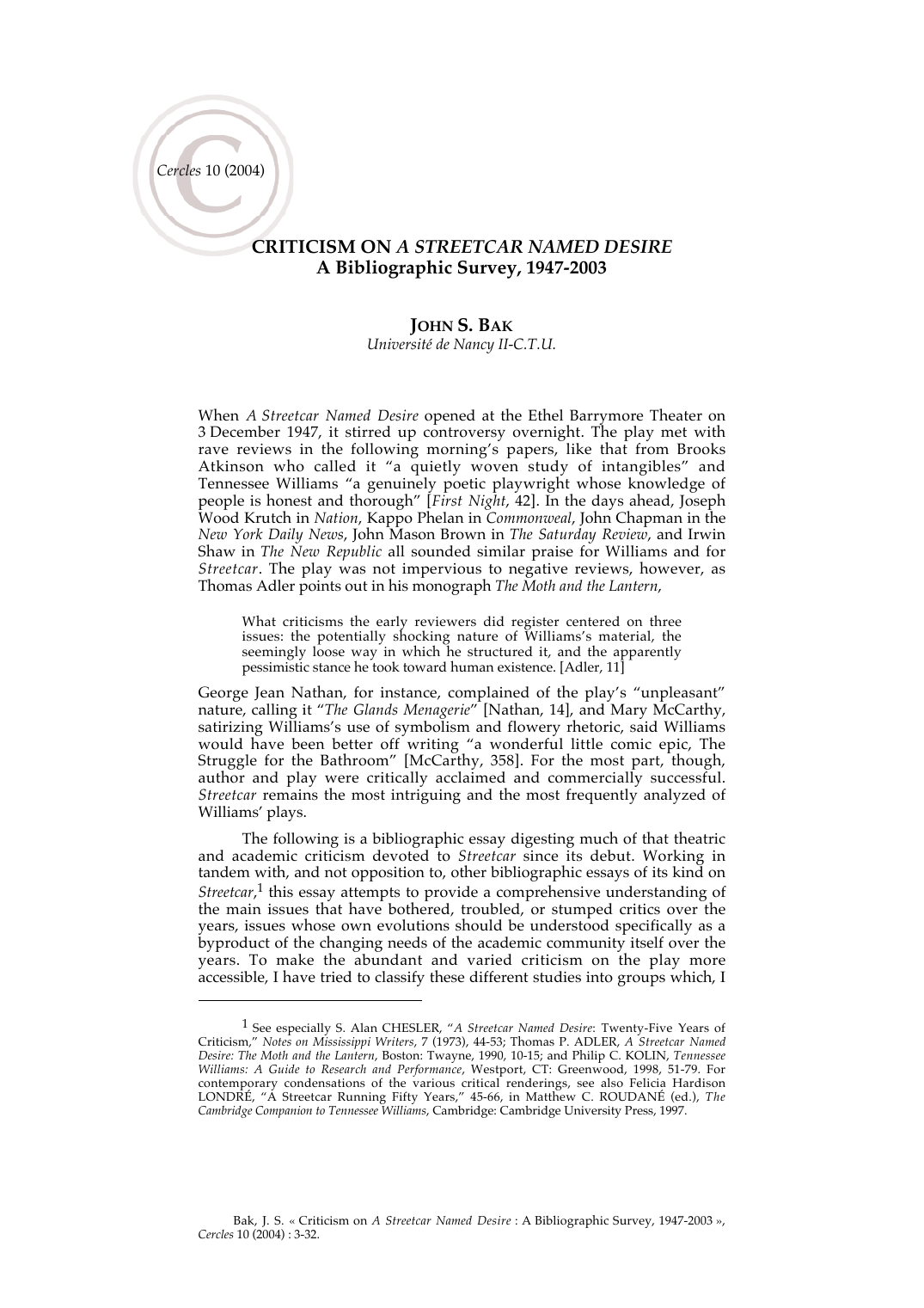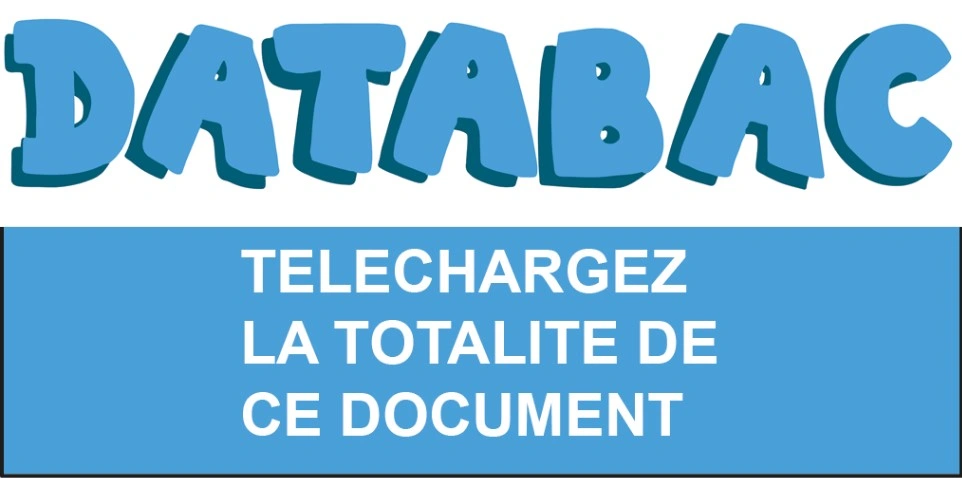Streetcar
Publié le 17/05/2020
Extrait du document
«
Bak, J.
S.
Ç Criticism on A Streetcar Named Desire : A Bibliographic Survey, 1947-2003 È, Cercles 10 (2004) : 3-32.
CRITICISM ON A STREETCAR NAMED DESIRE
A Bibliographic Survey, 1947-2003
JOHN S.
B AK
Universit de Nancy II-C.T.U.
When A Streetcar Named Desire opened at the Ethel Barrymore Theater on
3 December 1947, it stirred up controversy overnight.
The play met with
rave reviews in the following morningÕs papers, like that from Brooks
Atkinson who called it Òa quietly woven study of intangiblesÓ and
Tennessee Williams Òa genuinely poetic playwright whose knowledge of
people is honest and thoroughÓ [First Night , 42].
In the days ahead, Joseph
Wood Krutch in Nation , Kappo Phelan in Commonweal , John Chapman in the
New York Daily News , John Mason Brown in The Saturday Review , and Irwin
Shaw in The New Republic all sounded similar praise for Williams and for
Streetcar .
The play was not impervious to negative reviews, however, as
Thomas Adler points out in his monograph The Moth and the Lantern ,
What criticisms the early reviewers did register centered on three issues: the potentially shocking nature of WilliamsÕs material, the seemingly loose way in which he structured it, and the apparently
pessimistic stance he took toward human existence.
[Adler, 11]
George Jean Nathan, for instance, complained of the playÕs ÒunpleasantÓ
nature, calling it ÒThe Glands Menagerie Ó [Nathan, 14], and Mary McCarthy,
satirizing WilliamsÕs use of symbolism and flowery rhetoric, said Williams
would have been better off writing Òa wonderful little comic epic, The
Struggle for the BathroomÓ [McCarthy, 358].
For the most part, though,
author and play were critically acclaimed and commercially successful.
Streetcar remains the most intriguing and the most frequently analyzed of
WilliamsÕ plays.
The following is a bibliographic essay digesting much of that theatric
and academic criticism devoted to Streetcar since its debut.
Working in
tandem with, and not opposition to, other bibliographic essays of its kind on
Streetcar ,1 this essay attempts to provide a comprehensive understanding of
the main issues that have bothered, troubled, or stumped critics over the
years, issues whose own evolutions should be understood specifically as a
byproduct of the changing needs of the academic community itself over the
years.
To make the abundant and varied criticism on the play more
accessible, I have tried to classify these different studies into groups which, I
1 See especially S.
Alan CHESLER, ÒA Streetcar Named Desire : Twenty-Five Years of Criticism,Ó Notes on Mississippi Writers , 7 (1973), 44-53; Thomas P.
ADLER, A Streetcar Named Desire: The Moth and the Lantern , Boston: Twayne, 1990, 10-15; and Philip C.
KOLIN, Tennessee Williams: A Guide to Research and Performance , Westport, CT: Greenwood, 1998, 51-79.
For contemporary condensations of the various critical renderings, see also Felicia Hardison LONDR, ÒA Streetcar Running Fifty Years,Ó 45-66, in Matthew C.
ROUDAN (ed.), The Cambridge Companion to Tennessee Williams , Cambridge: Cambridge University Press, 1997.
Cercles 10 (2004).
»
↓↓↓ APERÇU DU DOCUMENT ↓↓↓


